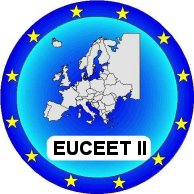DEFINITION:
ICT: The study of the technology used to handle information and aid communication.
OBJECTIVES:
IT has and will cause great changes that affect all organisations, work content, business, physical and virtual products, and tools in all aspects of modern society.
The introduction of modern information and communication tools can help generating an enhanced and flexible learning environment. Further more within civil
engineering education it is of great importance to be aware of what changes are relevant for the building sector. In adapting to the ongoing process it is possible
to outsource specific competencies, but also form strategic coalitions in new interdisciplinary ways. In today’s and even more in the future building industry, it will
be necessary for civil engineering graduates to take actively part in managing, design, implementation and evaluation of tomorrows building process support systems.
“A broad general view and insight into the complex building process together with a broad and in some key areas deep knowledge into existing and coming
IT tools are required in combination.”
(Per Christiansson, Aalborg University)
AIMS:
• At present there is already a lot of experience in ICT throughout Europe within supported courses, e-learning or virtual universities. Some of these institutions, courses
or methods started more than 10 years ago. It is important to learn from these experiences and to analyse them in order to give some recommendations along with
support for a practical application.
• Another aim is to give examples of good practice. They could help illustrating how to create a flexible learning environment in which it is possible to ensure current
ICT standards and as well prepare for future changes. Along with examples it will be necessary to identify key points for a more general adaptation.
QUESTIONS:
• What is the level of expertise concerning ICT among students and teachers across Europe?
• What kinds of changes resulting from the use of ICT are important for the civil engineering sector?
• How can the implication of ICT improve teaching & learning?
• What is important if ICT is applied in civil engineering education?
WORKING METHOD:
In the first stage it is important to gain insight of the variety of expertise and practical use of ICT among the EUCEET participants. If possible there should be a common
agreement on a state of the art standard in ICT application. EUCEET participants should at this stage indicate potential examples of good practice within their institutions
and report sources for further detailed information. In a second stage, key points for target and prospect should be identified and agreed upon the bases of the information
gathered by the examples of good practice. The key points should be analysed with respect to applicability and presented in relation to examples and previous experiences.
At the last stage the gathered information will feed into a report, benchmarking the European standard of ICT implementation. Further providing an insight on how ICT
can enhance the teaching environment.
DELIVERABLES:
A general report will present the situation of ICT in the European civil engineering education and explain by key points the target and prospect of its present and future
application. The report will be concluded by giving samples of good practice linked to the developed key points.
EXAMPLES FOR TARGET & PROSPECT:
(uncompleted)
STUDENT
• Practical expertise
(e.g. exercise in virtual environments, introduction to state of the art technology)
Examples: Designing by virtual simulations, CAD, (online communication and basic office tools = standard already?)
The practical expertise is essential for later employment within the industry. The main problem in application within the education of civil engineering is the degree of
basic knowledge which has to be supplied by the teacher.
• Learning style / learning environment
(e.g. individual/group learning, adapted pedagogic, access to learning material, interaction, independence of time and location)
Examples: Interactive tools
Ability to teamwork on a larger scale becomes increasingly important in modern engineering. The individual learning tools offer the students an opportunity to find or to
create a suitable learning environment for themselves.
TEACHER
• Improved teaching
(e.g. multi medial learning material)
• Evaluation tool
(e.g. feedback and interaction)
The option of direct and individual interaction offers a new range of feedback and assesment for the teacher – especially if the number of students is high.
• Collaboration
(e.g. between universities, faculties and teachers or even industry)
Examples: Groupware, open source projects, netmeeting
It is important to share knowledge and expertise. With the addition of options as sharing, discussing and presenting, group activity enhances the work results.
